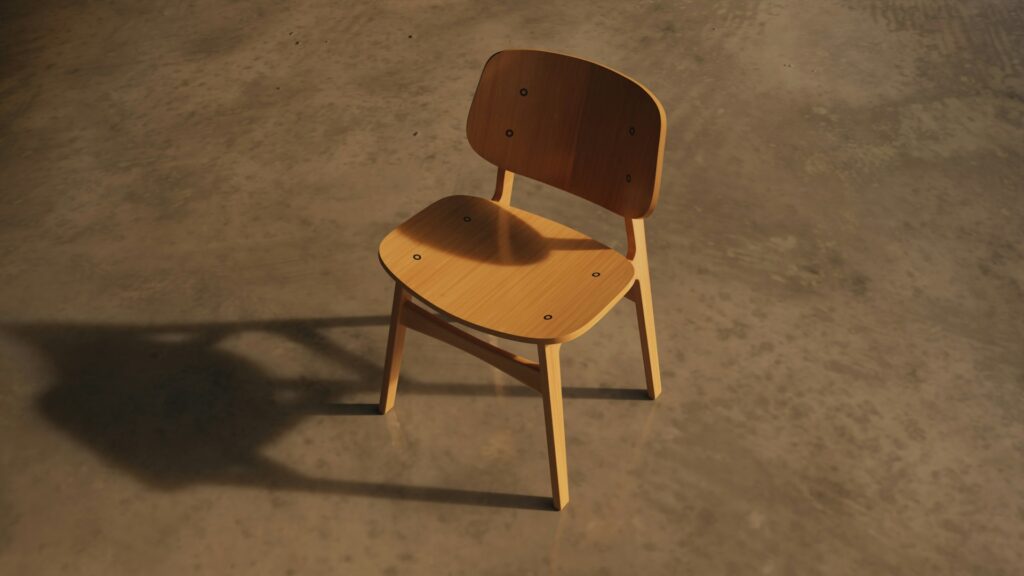Behind every piece of Indonesian furniture exported worldwide lies a highly coordinated production system — one that blends artisan skill, modern machinery, and strict quality control. Buyers sourcing from Indonesia can expect a balance of traditional craftsmanship and industrial precision. This article outlines each stage of the production workflow, from sourcing and drying to assembly, finishing, and export logistics.
1. Certified Sourcing and Material Selection
Indonesian factories prioritize legally sourced wood, ensuring traceability and sustainability.
- SVLK certification (mandatory for all wood exports) verifies legal origin and chain of custody (FLEGT.org).
- Many manufacturers also maintain FSC® certification to serve eco-conscious markets.
- Common materials include teak, mahogany, acacia, and mindi, each offering unique textures and durability levels.
These sourcing standards give buyers confidence that their products meet both ethical and environmental requirements.
2. Primary Processing: Cutting and Preparation
Logs are processed into usable components through CNC cutting and milling.
- CNC machinery ensures consistent dimensions for high-volume orders.
- Artisans inspect each cut to select the best grain and density for structural strength.
This hybrid approach of automation and human expertise ensures accuracy without losing craftsmanship.
3. Kiln Drying: Stabilizing the Timber
Moisture control is one of the most critical stages in Indonesian furniture manufacturing.
- Wood is kiln-dried to 8–12% moisture content, the export standard for stability.
- Factories perform moisture meter tests before and after drying to prevent warping and cracking.
- Drying times vary depending on wood type and thickness.
Proper drying ensures the furniture maintains its shape and quality during long-distance shipping and climate changes.
4. Assembly and Joinery
After drying, components move to assembly lines.
- Mortise-and-tenon joints remain the most trusted construction method.
- Hand assembly ensures tight fitting and alignment, while CNC routers handle repetitive accuracy.
- Larger factories run dedicated assembly sections for different product types (e.g., tables, chairs, bed frames).
This balance of scale and precision defines Indonesia’s competitive edge in manufacturing.
5. Finishing and Treatments
Finishing brings both beauty and protection to the furniture.
- Multi-stage sanding removes rough surfaces and prepares wood for finishing.
- Natural oils, sealants, or water-based coatings are applied depending on the buyer’s requirements.
- Outdoor furniture may include UV-resistant and waterproof finishes for added longevity (Republic Furnitures).
6. Quality Control (QC) and Inspection
Factories conduct strict QC throughout production:
- Visual checks for scratches, cracks, or uneven finishes.
- Moisture tests post-drying.
- Load and stress testing for structural stability.
- Final inspections include documentation and photo reports for buyers.
This multi-step QC process ensures consistent export quality across container shipments.
7. Lead Times and Logistics
- Production cycle: 70–90 days per container (depending on complexity).
- Shipping: 3–4 weeks via ports in Semarang, Surabaya, or Jakarta.
- MOQ: Typically container-scale (50–100 pieces per SKU).
Buyers benefit from Indonesia’s established export infrastructure and transparent timelines (CIFOR).
Snapshot: Indonesian Furniture Factory Workflow
| Stage | Key Process | Buyer Takeaway |
|---|---|---|
| Sourcing | SVLK/FSC® certified wood | Legal and sustainable materials |
| Cutting | CNC + artisan inspection | Precision with craftsmanship |
| Kiln Drying | 8–12% moisture standard | Prevents cracking or warping |
| Assembly | Mortise-and-tenon joinery | Structural integrity |
| Finishing | Natural or protective coatings | Long-lasting durability |
| QC | Visual, moisture, load tests | Verified export quality |
| Logistics | Container-scale shipping | Reliable global delivery |
FAQ
Q: What certifications should buyers verify before ordering?
A: SVLK is required for all Indonesian wood exports, while FSC® adds value for sustainability-focused markets.
Q: What is the typical production lead time?
A: Most factories operate on a 70–90 day production cycle per container, depending on order complexity.
Q: How do Indonesian factories ensure consistent quality?
A: Through kiln drying, multi-stage QC testing, and a mix of machine precision and manual craftsmanship.
Q: Can factories accommodate custom designs or finishes?
A: Yes. Most manufacturers offer customization, though this may affect lead times and MOQ.

